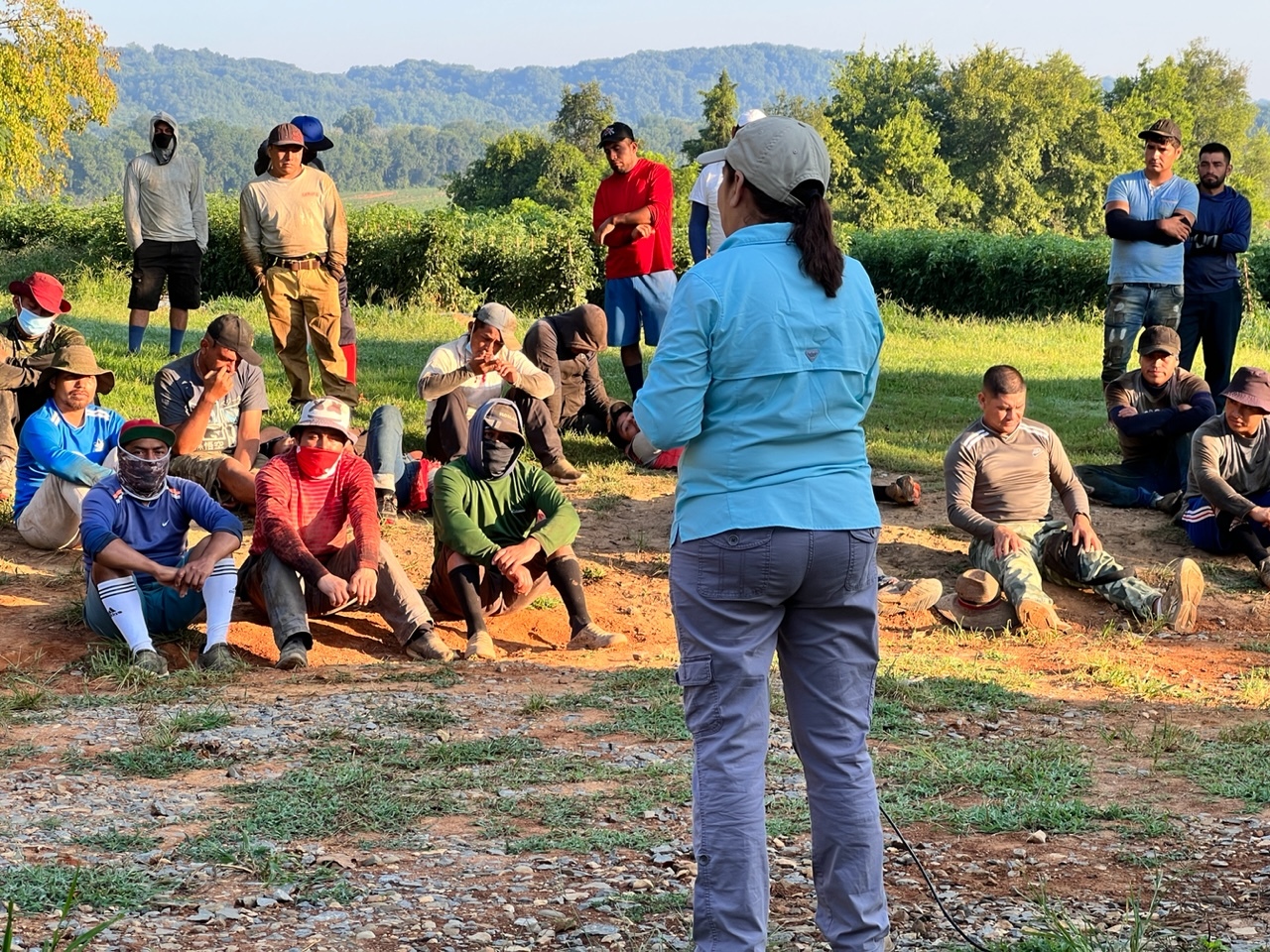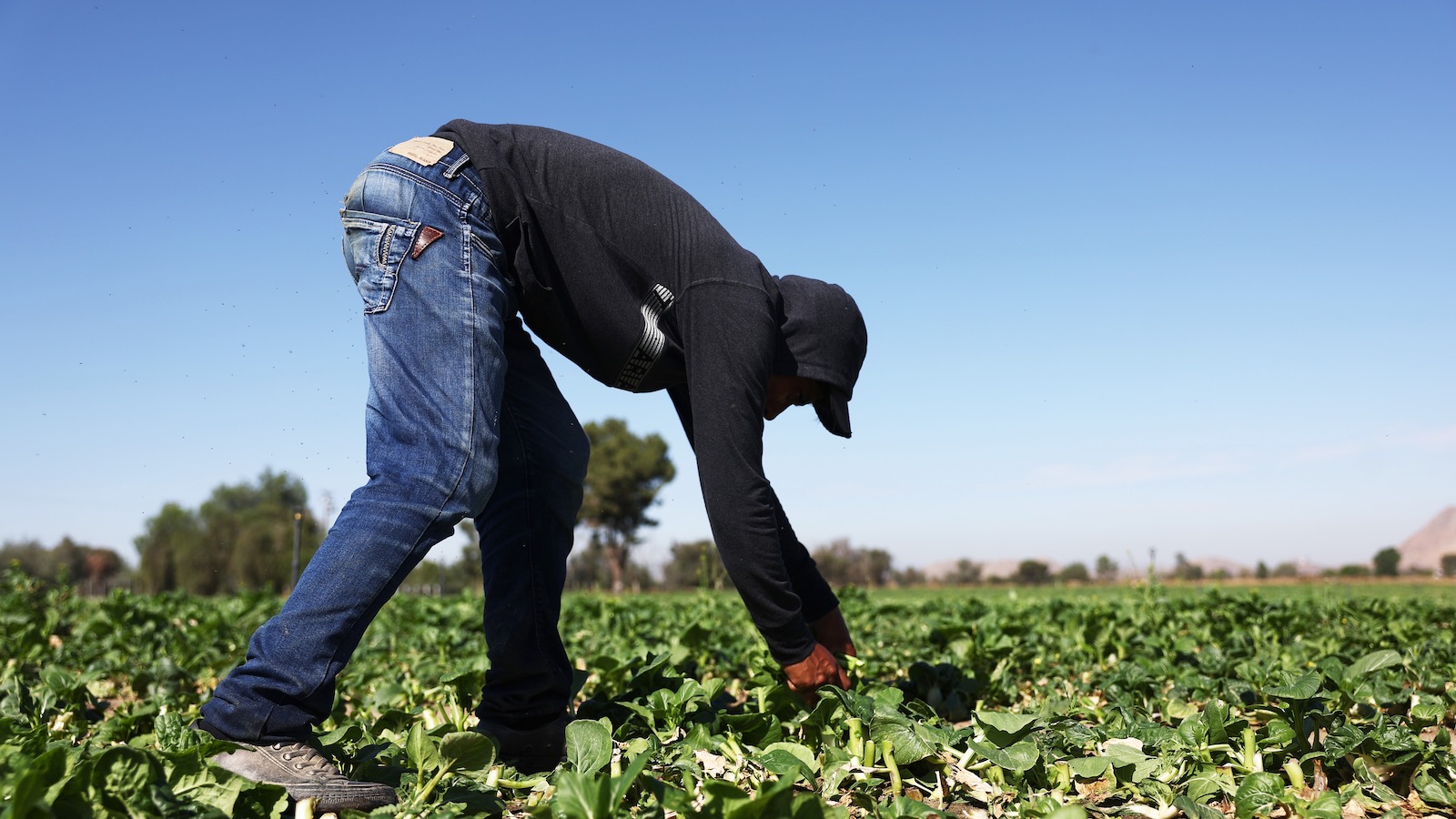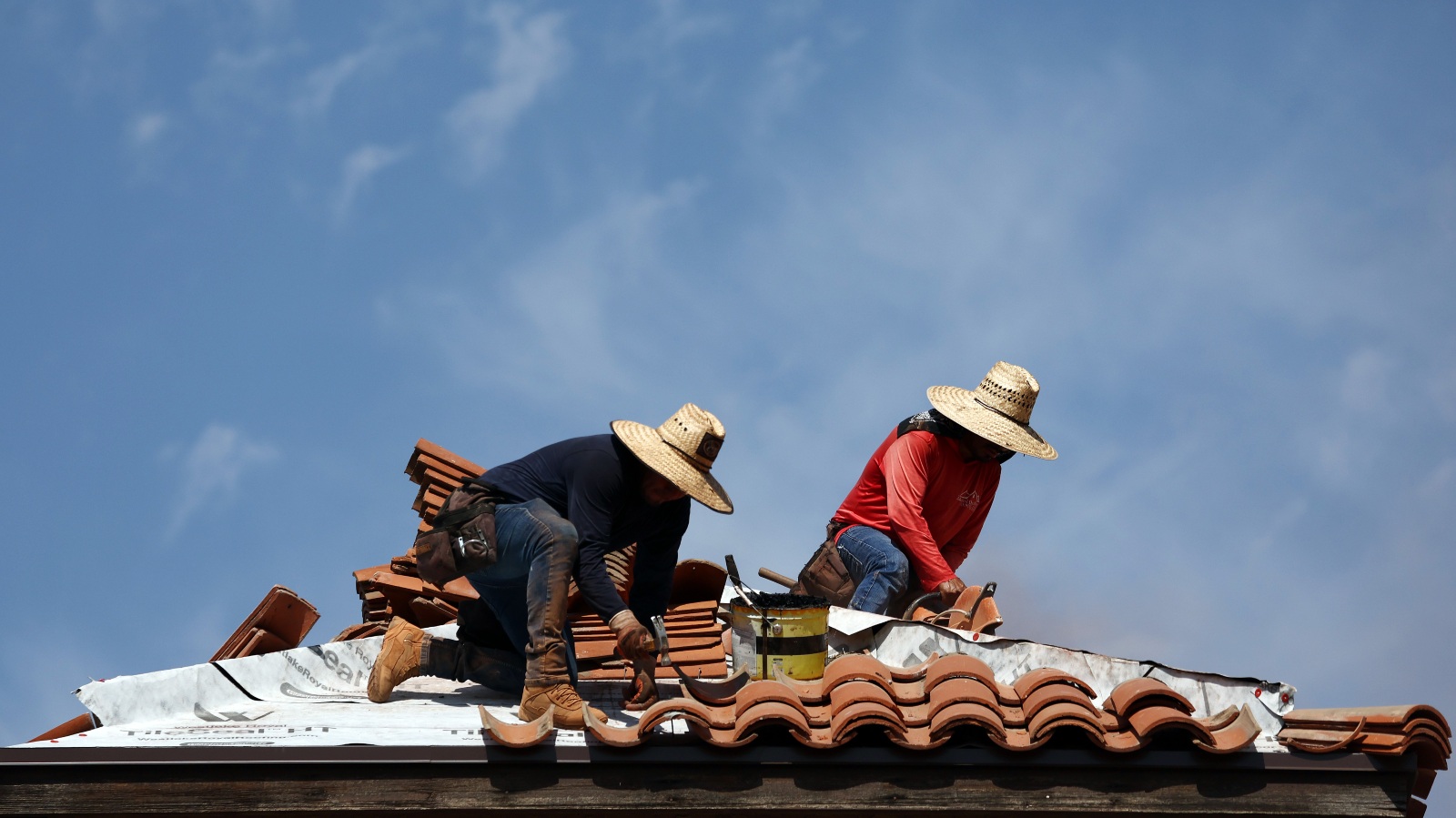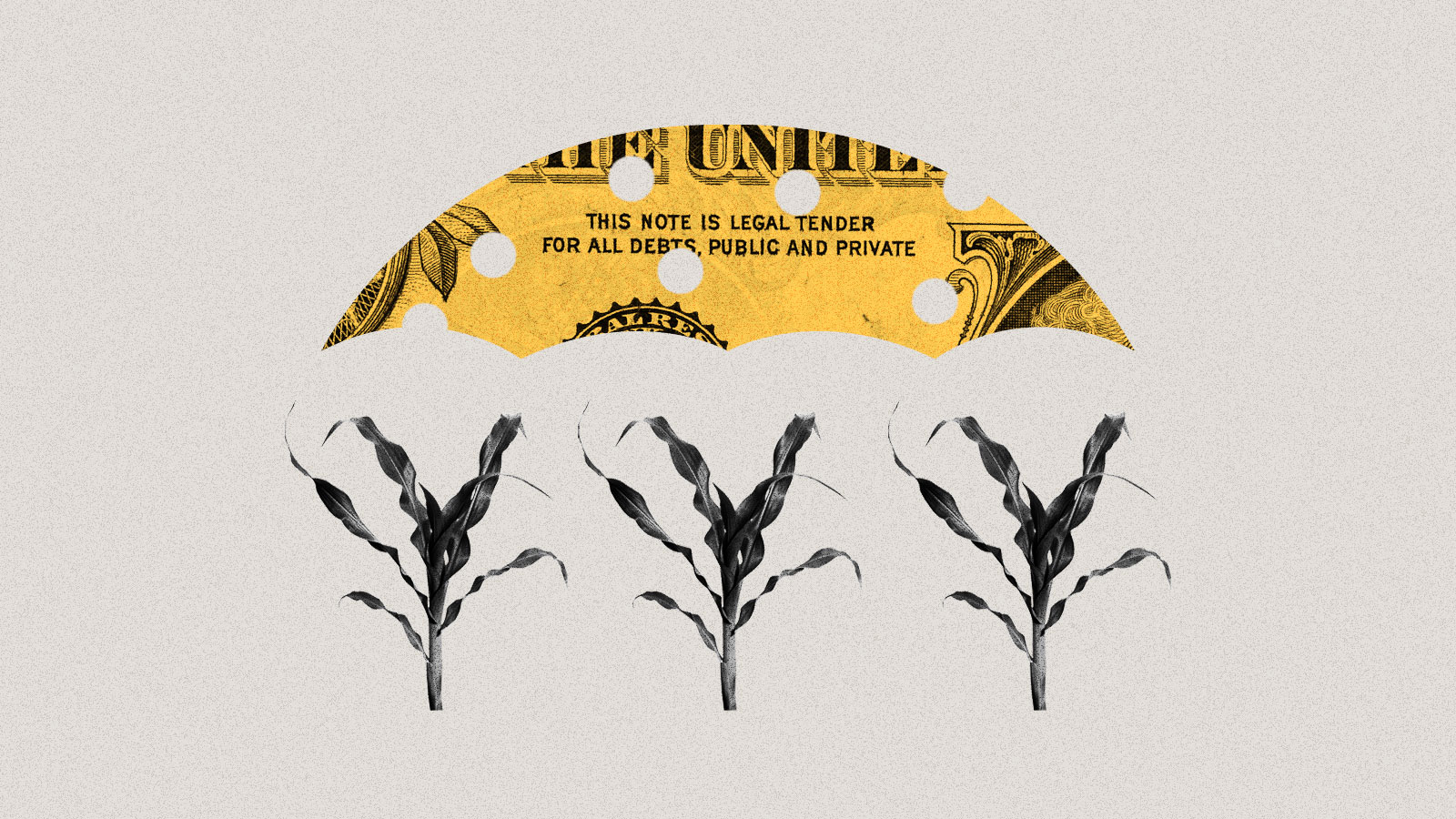This story is part of Record High, a Grist series examining extreme heat and its impact on how — and where — we live.
On any given summer day, most of the nation’s farmworkers, paid according to their productivity, grind through searing heat to harvest as much as possible before day’s end. Taking a break to cool down, or even a moment to chug water, isn’t an option. The law doesn’t require it, so few farms offer it.
The problem is most acute in the Deep South, where the weather and politics can be equally brutal toward the men and women who pick this country’s food. Yet things are improving as organizers like Leonel Perez take to the fields to tell farmworkers, and those who employ them, about the risks of heat exposure and the need to take breaks, drink water, and recognize the signs of heat exhaustion.
“The workers themselves are never in a position where they’ve been expecting something like this,” Perez told Grist through a translator. “If we say, ‘Hey, you have the right to go and take a break when you need one,’ it’s not something that they’re accustomed to hearing or that they necessarily trust right away.”
Perez is an educator with the Fair Food Program, a worker-led human rights campaign that’s been steadily expanding from its base in southern Florida to farms in 10 states, Mexico, Chile, and South Africa. Although founded in 2011 to protect workers from forced labor, sexual harassment, and other abuses, it has of late taken on the urgent role of helping them cope with ever-hotter conditions.
It is increasingly vital work. Among those who labor outdoors, agricultural workers enjoy the least protection. Despite this summer’s record heat, the United States still lacks a federal standard governing workplace exposure to extreme temperatures. According to the Occupational Safety and Health Administration, or OSHA, the agency has opened more than 4,500 heat-related inspections since March 2022, but it does not have data on worker deaths from heat-related illnesses.
Most states, particularly those led by Republicans, are loath to institute their own heat standards even as conditions grow steadily worse. In lieu of such regulation, the Coalition of Immokalee Workers, through its Fair Food Program, has adopted stringent heat protocols that, among other things, require regular breaks and access to water and shade. Such things are essential. Extreme heat killed at least 436 workers of all kinds, and sickened 34,000 more, between 2011 to 2021, according to NPR. Some believe that toll is much higher, and efforts like those Perez leads are providing a model for others working toward broader and more strictly enforced safeguards.
“We look to [the Fair Food Program] for best practices in terms of how can agricultural employers already begin to implement these kinds of protections,” said Oscar Londoño, the executive director of WeCount, which has been pushing for a heat standard in Miami-Dade County. “But we also believe that it’s important to have regulations and forcible regulation that covers entire industries.”
The Fair Food Program works with 29 farms, which raise more than a dozen different crops, and the buyers who rely upon them. In exchange for guaranteeing workers basic rights, participating growers and buyers, including Walmart, Trader Joe’s, and McDonald’s, receive a seal of approval that signals to customers that the produce they are buying was grown and harvested in fair, humane conditions.
To protect workers, the guidelines require 10-minute breaks every two hours and access to shade and water. The program also extended the time frame during which those things must be offered, from five months to eight, reducing the amount of time that workers are exposed to the worst heat of the year. Growers also must be aware of the signs of heat stress and monitor workers for them. Such steps are vital, particularly in humid conditions, to prevent acute heatstroke and safeguard employees’ long-term health. Repeated exposure to extreme temperatures can cause kidney disease, heat stroke, cardiovascular failure, and other illnesses.
“Having time to rest and cool down is very important to reduce the risk of death and injury from heat stress, because the damage that heat causes to the body is cumulative,” said Mayra Reiter, director of occupational safety and health at the advocacy organization Farmworker Justice. “Workers who are not given rest periods to recover face greater health risks.”

Such risks were very real for Perez, who worked various vegetable farms around Immokalee and along the East Coast before becoming an educator and advocate. Because most farmworkers are paid according to how much they harvest, few feel they can spend a few minutes in the shade sipping a beverage.
“The difficulty of the work makes you feel like it takes years off your life,” Lupe Gonzalo, a member of Coalition of Immaokalee Workers, wrote in a public blog post. High humidity makes things worse, and those who rely upon employer-provided housing often find no relief after a day in the fields because many accommodations lack air conditioning, she wrote.
Abusive conditions can compound the deadly conditions. A 2022 investigation by the Department of Labor revealed poor conditions, including human trafficking and wage theft, at farms across South Georgia. Two workers experienced heat illness and organ failure, and others were held at gunpoint to keep them in line as they labored.
Many were workers holding H-2A visas in a program that has its roots in the Mexican Farm Labor Program, launched in 1942, that sponsored seasonal agricultural workers from Mexico. (Currently, the U.S. Department of Homeland Security issues those visas.) Because of their reliance on employers for housing, visa sponsorship, and employment, many workers experience abuse, an investigation by Prism, Futuro Media, and Latino USA found earlier this year.
It doesn’t help that federal labor law, including the National Labor Relations Act, doesn’t cover agricultural workers in the same way it protects employees in other sectors, said James Brudney, a professor of labor and employment law at Fordham University. Additionally, language barriers, fear of retaliation, and workers who come from a variety of backgrounds and cultures keep many from speaking out.
Perez remembers having only bad options for dealing with adverse working conditions: Deal with it, complain and risk being fired, or quit. The Fair Food Program gives workers recourse he never had, and builds on protections against forced labor, sexual harassment, and other abuses it has achieved with workers, growers, and buyers, which have agreed not to buy from farm operators with spotty records, since 2011.
Workers are regularly informed of their rights, and violations can be reported to the Fair Food Program through a hotline for investigation. Heat-related complaints have grown increasingly common in recent years, and often lead to a confidential arbitration process. Such inquiries may lead to mandatory heat safety training and stipulations growers must abide by. Findings of more serious allegations, such as sexual harassment, can lead to a grower being suspended or even removed from the program. Such efforts protect workers, hold employers accountable, and allow the program to know what’s most impacting laborers, said Stephanie Medina, a human rights auditor with the Fair Food Standards Council.
“With the record heat, every summer has definitely, I think, gotten a lot more difficult for workers out there,” Medina said. “I think that is one of the reasons why we put so much emphasis on getting the heat stress protocols together and implemented in the program.”
Growers must report every heat-related illness or injury, which is investigated by Medina’s team or an outside investigator depending on severity. Her team visits every participating grower annually. Many of them go beyond the program’s requirements to ensure worker safety, by, say, providing Gatorade and snacks and regularly checking in on those who have experienced heat-related illness, she said. Workers, too, are being more assertive in protecting themselves, reporting any violations because they know they cannot be retaliated against.
Though no growers or farmer’s associations responded to Grist’s requests for comment, some at least appear happy with the organization’s work. “The Fair Food Program is giving us structure and is a tool for better understanding in a workplace that is multicultural and multiracial,” Bloomia, a flower producer and FFP participant, said in a statement on the program’s website.
Still, some farmworkers’ organizations, while supportive of the program’s work, doubt that farm-by-farm solutions will ever be enough to protect a majority of farmworkers. Jeannie Economos, of the Farmworkers’ Association of Florida, said comprehensive policy-level solutions are required. She noted that even in Florida nurseries, greenhouses, and other growers of ornamental plants employ thousands of people who are not yet covered by the Fair Food Program. Although they one day may be, federal, state, and local regulations are needed to ensure sweeping safety reforms.
“So what do we think of the Fair Food Program? It’s good,” she said. “But it’s not far-reaching enough.”
Other campaigns are working toward legislative solutions. An effort called ¡Que Calor! in Miami-Dade County, led by WeCount, has been pushing the issue for years, and in many ways is inspired by what the Coalition of Immokalee Workers has accomplished, Londoño told Grist.
“Miami-Dade is on the verge of passing the first county-wide [standard] in the country, and it would protect more than 100,000 outdoor workers in both agriculture and construction,” he said “In the absence of a federal rule, and in the absence of state protections, local governments can play a foundational role in piloting policies that states and the entire federal government can take on.”
¡Que Calor!, has, like the Fair Food Program, been led by workers. Including them in drafting policies can help ensure they are effective because “they know what their risks and the threats to their well being are better than anyone,” Brudney, the Fordham University professor, said
Yet even jurisdictions with strict labor laws can see their protections undercut because they often rely on employees, who may face reprisals, to report violations. Miami-Dade’s proposal skirts that by creating a county Office of Workplace Health with broad powers to receive complaints, initiate inspections, interview workers, and adjudicate investigations.
Amid such victories and a mounting need to protect workers, the Fair Food Program plans to expand its reach. It has cropped up at tomato farms in Georgia and Tennessee; crept up the East Coast to lettuce, sweet potato, and squash farms in North Carolina, New Jersey, Maryland, and Vermont; and sprouted on sweet corn farms in Colorado and sunflower farms in California. Organizers from the Fair Food Program have in recent weeks met with growers and workers in Chile eager to bring its efforts there.
The organization hopes to see its principals embraced more widely, and continues to pressure more companies, including Wendy’s and the Publix supermarket chain, to buy into the effort. Medina says such an effort will require staffing up, but she’s confident in its chances of success.
Many growers willfully neglect the rights and needs of workers, making such efforts essential, Perez said. The need for victories like those already seen on farms that work with the program will only grow more acute as the planet continues to warm. Even if federal heat standards are adopted, Perez believes local worker-led accountability processes will still be needed to ensure growers follow the law.
“What we see the Fair Food Program as is both a method of education and a way to share information with workers about these risks,” he said, “and at the same time as a tool for workers to protect themselves against the worst effects of climate change on a day to day basis.”





